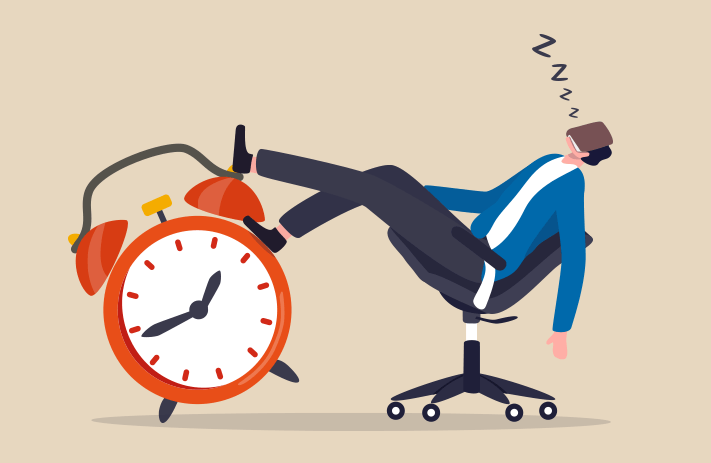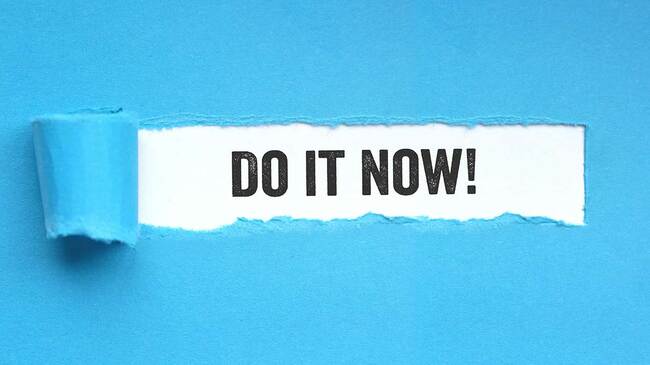
Picture this: you’re sitting at your desk, fully aware of the task waiting for you. Maybe it’s an important report, a proposal, or an email. But instead of starting, you find yourself tidying your workspace for the third time, scrolling through your favorite app, or convincing yourself you’ll do it after “just one more break.” Sound familiar?This is procrastination in action
Procrastination—a dance between what we know we should do and what we end up doing. It’s not about laziness, as many assume. In fact, procrastinators are often busy with anything but the task at hand. Instead, procrastination is about delay: a calculated avoidance of the hard, the uncomfortable, or the uncertain.
But why do we do it? Why do we repeatedly put off tasks, knowing the stress it causes us later? It’s because procrastination offers a temporary escape. It’s easier to delay than to face the overwhelming, the unknown, or the less-than-perfect. However, that temporary relief doesn’t last. Deadlines don’t disappear, expectations don’t lower, and the weight of unfinished work only grows heavier.
This is where the ‘Do It Now’ mindset comes in. It’s not just about working faster or harder. It’s about shifting how we think and approach tasks. Instead of seeing them as daunting obstacles, the ‘Do It Now’ mindset reframes tasks as opportunities for progress, no matter how small.
So, whether you’re battling the urge to delay a presentation, a home project, or even your long-term goals, this guide will help you break free from the cycle of procrastination. It’s time to stop putting things off and start taking control—because your future self is counting on you.
The Psychology of Procrastination: Why We Delay

Procrastination isn’t as simple as being lazy or uninterested; it’s a complex response to emotions like fear, overwhelm, or self-doubt. If you’ve ever felt an almost magnetic pull to delay a task, you’re not alone—it’s a universal experience. But why does it happen?
At its core, procrastination is a battle between two parts of your brain: the logical planner and the emotional comfort-seeker. The logical side knows you need to prepare that presentation or file that report. Meanwhile, the emotional side convinces you that watching a quick video or reorganizing your files feels better right now. Psychologists call this “short-term mood repair”—choosing activities that provide immediate relief over those that feel effortful or uncertain.
For instance, you might delay starting a big project because it feels overwhelming. Or, you might avoid applying for a role because you’re afraid of rejection. Procrastination doesn’t come from laziness but from a desire to avoid discomfort.
The consequences, however, can snowball. The more you procrastinate, the more stress you feel as deadlines approach. This stress, in turn, makes the task seem even more daunting, creating a vicious cycle. Procrastination also chips away at self-esteem. The unfinished to-do list constantly reminds you of what you haven’t done, leading to guilt and frustration.
But here’s the good news: procrastination is a behavior, not an identity. It’s not who you are but what you do, which means it can change. By understanding its roots, you can start to break the cycle. The ‘Do It Now’ mindset is about shifting from avoidance to action. It doesn’t require perfection or heroic leaps—just small, deliberate steps forward.
Mastering the ‘Do It Now’ Mindset

Breaking free from procrastination isn’t about overnight transformation but building a mindset that prioritizes action over avoidance. The ‘Do It Now’ mindset is rooted in small, consistent changes that shift how you approach tasks, making it easier to take the first step. Let’s dive into the strategies that help you master this approach.
Step 1: Name the Elephant
The first step to overcoming procrastination is identifying the real reason behind your delay. Procrastination is often a symptom, not the problem itself. Are you avoiding a task because it feels overwhelming? Are you afraid of failing? Or is the task simply boring or unclear?
For instance, if you’ve been postponing a report, ask yourself: Is it because you don’t know where to start? Or because the deadline feels too far away to spark urgency? Once you pinpoint the root cause, addressing the barrier is easier. For example, if uncertainty is the issue, clarify the task briefly before diving in. Naming the elephant removes the emotional fog and allows you to take meaningful action.
Step 2: The Power of the Start
Getting started is often the hardest part, but it’s also the most important. Psychologists call this the “Zeigarnik Effect”—once you start a task, your brain naturally wants to complete it. The key is to make the start as easy as possible.
For example, if you’re dreading a 20-page report, don’t focus on the entire document. Commit to writing just one sentence. Once you start, momentum kicks in, and that single sentence often turns into a paragraph, then a page. Small beginnings create big progress.
Step 3: Redefine Productivity
Procrastination often thrives in the shadow of perfectionism. When you set unrealistic expectations, it becomes easier to delay tasks rather than risk falling short. The ‘Do It Now’ mindset encourages you to prioritize progress over perfection.
Think of productivity as completing tasks incrementally, not flawlessly. If you’re working on a presentation, focus on drafting the slides first, even if they aren’t perfect. Editing and polishing can come later. Each small accomplishment builds confidence and reduces the urge to procrastinate.
Step 4: Design a Routine That Works for You
Routines create structure, eliminating decision fatigue—the endless debate about whether to start now or later. To build a routine, align your tasks with your natural energy levels. If you’re a morning person, schedule high-priority tasks early in the day. If you work better in the evening, save your complex tasks for that time.
Consistency is key. By dedicating specific times to work, your brain starts associating those periods with focus, making it easier to act without overthinking.
Step 5: The Art of Saying “No”
Sometimes, procrastination results from taking on too much. When your plate is overloaded, it’s tempting to delay tasks simply because you don’t know where to begin. The ‘Do It Now’ mindset includes setting boundaries and focusing on what truly matters.
Learn to say no to tasks that don’t align with your priorities. This doesn’t mean shirking responsibility but directing your energy toward high-impact work. When you focus on fewer, more meaningful tasks, you’re less likely to procrastinate and more likely to deliver quality results.
Overcoming Setbacks: When Procrastination Strikes Again
Even with the best strategies in place, procrastination has a way of creeping back in. You might start strong with the ‘Do It Now’ mindset, but a difficult task, unexpected stress, or even sheer exhaustion can pull you back into old habits. This doesn’t mean you’ve failed—it’s part of the process. Learning to recover from procrastination without guilt is just as important as avoiding it in the first place.
Acknowledge the Setback Without Judgment
The first step is to accept that procrastination happened without beating yourself up. It’s easy to spiral into negative self-talk: “I’ll never get this right” or “Why can’t I just be more disciplined?” But guilt only drains your energy further. Instead, acknowledge the delay for what it is—a temporary pause, not a permanent failure.
Shifting your perspective helps you focus on solutions rather than self-criticism. For example, instead of dwelling on the time lost, ask yourself: What’s the next small step I can take right now to move forward?
Revisit Your Why
When procrastination strikes, it often helps to reconnect with your motivation. Why does this task matter? How does completing it align with your goals? Revisiting your “why” can reignite your sense of purpose and make the task feel meaningful again.
For instance, if you’re procrastinating on a presentation, remember that delivering it effectively could lead to recognition, promotion, or personal growth. Tying tasks to tangible outcomes helps you regain focus.
Reset Your Priorities
Sometimes, procrastination happens because we’re juggling too much at once. If this is the case, take a step back and reevaluate your priorities. Ask yourself:
- What tasks are genuinely urgent?
- What can be delegated or postponed?
By narrowing your focus, you can channel your energy into high-priority tasks instead of spreading yourself too thin.
For example, if a long to-do list feels overwhelming, pick just one task to start with. Completing that task creates momentum and clears the path for tackling the rest.
Celebrate Progress, Not Perfection
One reason procrastination is so persistent is that we often wait for the perfect time, the perfect plan, or the perfect mood. But perfection is an illusion—it’s progress that truly matters.
When you complete even a small step, celebrate it. If you finally send an email you’ve been avoiding, take a moment to acknowledge the accomplishment. Positive reinforcement builds confidence and makes it easier to stay on track.
Build Resilience for the Future
Procrastination setbacks are inevitable, but they’re also opportunities to learn. Reflect on what triggered the delay: Was it fear? Lack of clarity? Distractions? Use these insights to adjust your approach moving forward.
For instance, if distractions pull you away, consider creating a distraction-free zone for your next work session. If you feel overwhelmed, break your task into smaller, more manageable parts next time. Each setback is a chance to refine your strategies and strengthen your ‘Do It Now’ mindset.
Your First Step Starts Now
Procrastination may feel like an immovable obstacle, but it’s far from permanent. As we’ve explored, the ‘Do It Now’ mindset is not about perfection or never feeling the urge to delay; it’s about taking control, one small step at a time.
By understanding the psychology behind procrastination, you’ve uncovered the emotional triggers that often lead to delays. From fear of failure to perfectionism, recognizing these patterns is the first victory in the battle against procrastination. Armed with strategies like breaking tasks into manageable pieces, redefining productivity, and designing a routine that works for you, you now have practical tools to take action instead of putting things off.
But what happens when setbacks arise? You’ve learned that they’re not failures but opportunities to pause, reflect, and recalibrate. With each stumble, you build resilience, sharpen your strategies, and return stronger.
So, here’s the challenge: What’s one task you’ve been putting off? Maybe it’s a difficult email, a project you’ve been dreading, or even a personal goal you’ve delayed for months. Take a deep breath and commit to your first step today. Not tomorrow, not next week—now. It doesn’t have to be perfect or monumental; it just has to be a start.
The ‘Do It Now’ mindset is more than a strategy—it’s a way of thinking that empowers you to take ownership of your time, productivity, and potential. Each action, no matter how small, brings you closer to the future you envision.
Remember, procrastination doesn’t define you—your actions do. Your journey to overcoming procrastination starts with one decision, moment, and task. Why not start now?
